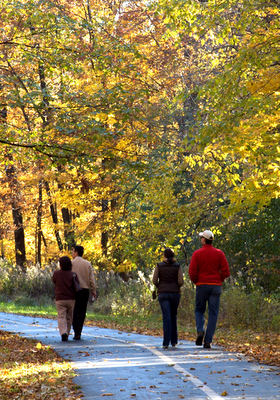Community Character
Community Character

Bicycling supports efficient, compact, sustainable land development patterns, in which Transportation and land use are integrated and working together to achieve greater mobility, equity, health, prosperity, and a higher overall quality of life. As the urban theorist and author Jane Jacobs noted, "People love activity, not emptiness." Both bicycling and walking allow people to get outside and interact with one another. They fill the public realm with activity, create opportunities to speak with neighbors, and provide more "eyes on the street" to discourage crime and violence.
Increasing the ease and comfort with which residents can bicycle is also good for families with children. A bicycle enables a young person to explore his or her neighborhood, visit places without being driven by parents, and experience the freedom of personal decision-making. More trips by bicycle and on foot means fewer trips by car. This, in turn, can mean less traffic congestion around schools and in the community, as well as less time spent by parents chauffeuring kids around.
According to the California Department of Transportation, "Approximately 3.5 million households – representing 7 million youngsters – spend an hour or less a week in some type of physical activity. A study conducted for the Boys & Girls Clubs of America and the Pennsylvania-based nonprofit group KidsPeace found 54% of respondents said they had little or no time, or wished they had more time, to spend in physical activities with their kids. Riding a bicycle or walking a child to school, or simply around the neighborhood after dinner, can give parents and kids one-on-one time to talk and spend meaningful, healthy time with one another." (California Department of Transportation)
In summary, bicycling is human-oriented. Travel by bicycle brings people into closer, more meaningful contact with their surroundings than travel by automobile. While the geographic sphere within which one travels is generally smaller, bicycling allows one to know that sphere better, to observe the physical and social elements of one's neighborhood – to more easily stop, take note, greet, help, or exchange information with others. While it is difficult to quantify the impacts of bicycling on community character, the planning literature does indicate that increasing non-motorized travel can influence community cohesion (Litman).
|
What impact has bicycling in your community had on community character? Do the general observations above (bicycling and walking builds community cohesion) hold true in your area? |